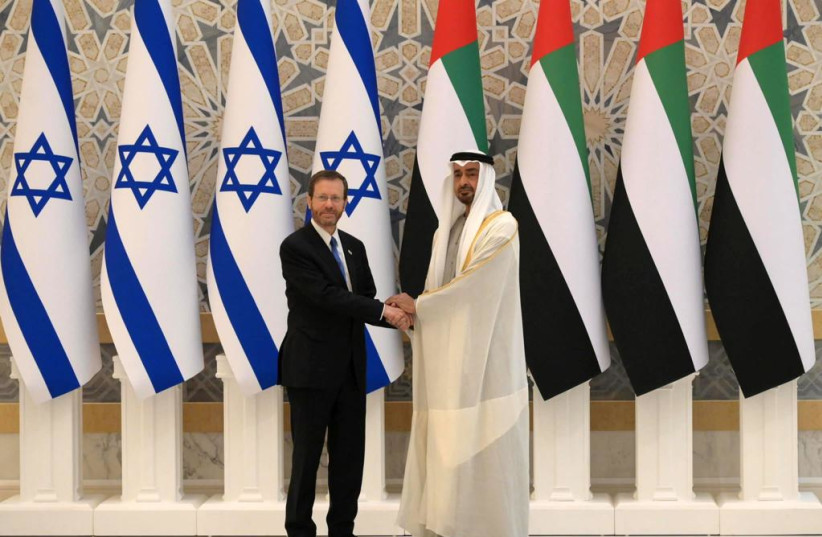The United Arab Emirates on Monday said it shot down a missile fired by Yemen’s Houthis, an attack that happened just after a symbolic day of visits by President Isaac Herzog. This would be unusual if the timing were not on purpose. But Iranian media did not highlight the attack during the early morning hours, just as they tended to ignore the visit. This is because Iran is wary of giving press to the important visit by Israel’s president.
The Houthis, an Iranian proxy, are not so circumspect. They want to send yet another message to the region about their missile and drone capabilities. The reports of the attack, with the UAE saying it intercepted the projectile, came after the Emirates also published information about airstrikes in Yemen. It appears the UAE struck the platform for launching the ballistic missile that targeted it Monday morning.
Its Ministry of Defense Joint Operations Command announced, at 00:50 local time, the “destruction of platform for a ballistic missile launched from Al-Jawf, Yemen towards UAE. The missile was intercepted at 00:20 by air defenses. Video of successful destruction of missile platform and launch site.” The Houthis said they carried out “a large-scale military operation deep inside the UAE,” The Wall Street Journal reported. It was not clear if there was any evidence regarding the size of the attack.
It came just days after pro-Iran militias in Iraq targeted Baghdad International Airport with 107-mm. rockets. The rockets damaged a plane on January 28. On January 17, the Houthis carried out another wide-ranging attack, and on January 24, they also targeted the UAE. The Emirates has increased its effectiveness in stopping the attacks with air defenses.
The appearance of an attack by the Houthis coinciding with Herzog’s high-profile visit shows how they are trying to score points in regional propaganda. This is similar to the attack on Baghdad Airport. It appears that Iran’s proxies are aiming for larger propaganda victories. It also came after pro-Iran groups in Syria last week attempted a wide-scale infiltration of Jordan using drug smugglers, many of whom were killed by Jordan.
We are seeing a rise in Iranian-backed attacks in the region, even as Iran’s regime remains relatively quiet. Tehran wants to show it can operationalize the militias and terrorist groups from Yemen, Iraq and Syria, while it plays a double game in Vienna, talking with the West.
The Islamic Republic wants sanctions relief from the US, but it is also working with Russia and China and trying to portray itself as a strong, normal country in the region. Within that context, it hosted a high-level visit by Qatar, and its media have downplayed some bellicose actions.
Nevertheless, these missile attacks on the UAE and the airport in Iraq represent a kind of impunity for Iran’s militia allies in the region.
Yemen’s Iran-backed Houthis aim for propaganda attack on UAE - analysis
The terrorist group wants to send yet another message to the region about its missile and drone capabilities.

